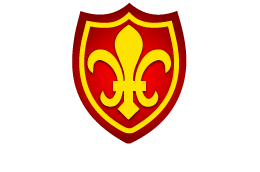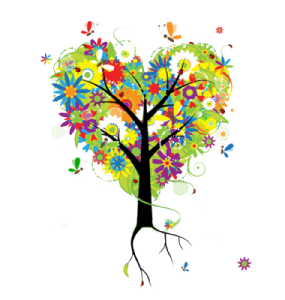Art
We believe that if we open our hearts and minds to the possibilities each and every one of us, no matter how small, can make a difference in our school and beyond. The parable of the Mustard seed teaches us that God can do a lot with a little! At Newdigate school we passionately believe that every child has a unique, inner creativity. Through creative experiences, all of your young children will learn and grow as artists and be capable of finding their inner creative voice, which will be encouraged and celebrated.
How will the children learn and grow in Art?
We offer an arts curriculum where children begin to
experience and develop an understanding of the elements of art and the skills and techniques that can be used. Where
creativity and imagination will be stimulated and challenged. We intend to develop
confidence and
self-esteem in both the design and production of creative work, where processes as well as end products are celebrated.
We will allow children time to explore and experiment to play with materials, processes and ideas. Experimentation always precedes work that is focused on producing a more finished outcome. We intend to encourage our children to explore relationships between their own 'making' practice and their appreciation of knowledge of established works or art, craft and design. Through skilful questioning we aim to develop higher-order thinking skills and a deeper analysis for our children to be able to discuss the works of artists, designers and art and design works. They will be encouraged to express a balanced and reasoned opinion and recognise that there are alternative perspectives. We will watch how our children engage with their work, see what they do, listen to what they say and take an interest in what they produce, using talk to introduce and extend technical and critical vocabulary. We believe there to be a direct correlation between the quality of talk and the quality of children's work. We consider assessment in Art a holistic process, which will occur during every art lesson through conversation with pupils.
How do we make this happen?
Pupils will be given the opportunity to explore the visual and tactile elements, materials and processes used in making art, craft and design and the differences and similarities in the work of artists, crafts people and designers in different times and cultures. We follow the AccessArt Scheme to ensure this. AccessArt works to inspire & enable high quality visual arts teaching, learning & practice . Find out how we do that and how you can get involved. AccessArt was founded in 1999 by Paula Briggs and Sheila Ceccarelli, graduates of the Royal College of Art Sculpture School. In 2004 AccessArt became a charity (Registered Number 1105049), with the aim of furthering advancement in the visual arts. We will use a variety of artefacts and pictures to talk informally with children about colour, shapes and what things are made of and link chosen artists closely to processes and themes and children's interest. We will develop a rich visual awareness by allowing our children to explore the visual elements of shape, line, pattern, colour , form, space, tone and texture. These elements will also be explored through short activities designed to scaffold larger creative projects. As the children become familiar with the concepts and their practical manifestations, they will make connections, form preferences and begin to use them more coherently in their own work. They will recognise the visual qualities in art, design or craft objects. They will learn to manipulate them in similar ways as they experiment with new materials and techniques. Lessons will be stand alone, exploring a different creative medium such as drawing, sculpture, painting focusing on progression of skills through quality experiences. Links to our topics will be made where appropriate. Occasionally artists will be invited in to work with all the children.
Teachers will consider assessment as an ongoing process which takes place during every art lesson in conversation with pupils. Tell me about what you are planning / making ? What could you try next? Tell me about what you have made?
The school have also adapted the Rainbow Continuum to better match our intended curriculum for art. This continuum is used to assess children against the colour bands and across all areas using a best fit approach. An annual calendar of assessment has been created for all subjects that details the expectations of when assessments will take place. Assessments are stored electronically within a cohort spreadsheet with individual subject tabs. Pupil names within class lists will be colour coded according to the assessment level after every assessment is completed. (dates to be recorded on the sheet), this allows for tracking of progress across key stage 1. Art will be assessed twice a year, in February half-term and again at the end of the year. Further links will be established with the Art lead at St Michael's Infant School for resources sharing, planning ideas and assessment implementation and moderation. A sketch book will be introduced for Key Stage 1 for scaffolding larger projects and allowing children to explore with freedom the skills experienced in art lessons. This sketch book will go with the children from Year 1 to Year 2. Children will be given ownership of these sketch books and teacher's will use 'talk' to extend child's vocabulary and encourage self evaluation. Art lessons will have a focus, but are considered part of a creative pathway to an end goal with each child's pathway being lead by their own creativity.
In consultation with Key adults and class teachers, planning and expected outcomes will take into consideration those children with an EHCP and any other children identified as needing additional support to access the curriculum. Planning will be modified where appropriate to ensure all children make good progress. Our mantra 'every child an artist' and our curriculum that encourages all to find their inner creativity, will help all children to progress and take proud ownership of their unique creative pathway.
How do we know this has made a difference?
At Newdigate school, our children will be able to talk about their own work, work of others and the work of other artists, craft makers and designers and to understand the historical and cultural development of their art forms. The carefully planned experiences scaffolding a systematic way to learn a skill or practice a process gives our children confidence to express their ideas in art and design. The children's progress in art and design is tracked over KS1 across the four progress objectives; EXPLORING AND DEVELOPING - skills of designing and developing ideas, USING MATERIALS - skills of investigating a variety of materials and selecting the best materials to suit the job, EVALUATING - skills of judgement and evaluation, CONTROL and EXPERTISE - skills of control and refinement when drawing and painting, colour mixing, shading and using a range of tools to get desired effect. By the end of Key Stage One the children will have developed critical appraisal skills; developing an appropriate vocabulary to help them evaluate and analyse their creative works and the works of others. They will be able to track their own progress through sketch books and feel a sense of achievement. Enjoyment and enthusiasm for the rich and varied experiences provided, will mean all children feel their work is valued.
Children are able to respond to questions about their art work eg.
- Tell me about what you are planning / making?
- What could you try next?
- Tell me about what you have made?
Art is tracked using the schools adapted Rainbow Continuum assessment model. This enables teachers to evaluate how the experiences they provide, have impacted on their children's creativity. Children's work is displayed and celebrated.

